|
HOME: www.hiltonpond.org |
|||
THIS WEEK at HILTON POND Subscribe for free to our award-winning nature newsletter (Back to Preceding Week; on to Next Week) |
2015 BIRD BANDING SUMMARY: After several years of sub-par banding totals, 2015 turned out to be a banner year at Hilton Pond Center with 2,346 new birds--the most since 2002 and well above our 34-year average of 1,860. This year's big numbers came thanks primarily to Pine Siskins (770 banded, male below), American Goldfinches (524), Purple Finches (245), and a record-breaking 246 Ruby-throated Hummingbirds; these four species combined for 1,785 individuals--76% of our annual total. In all, 56 species crossed the banding table in 2015--nearly half the 126 species banded at the Center since 1982.
All text, maps, charts & photos © Hilton Pond Center Despite above-average results for 2015, activity at Hilton Pond was impeded considerably when the master bander (Bill Hilton Jr.) underwent a laparoscopic knee procedure in April and then dual knee replacement surgeries in late June--the latter taking him away from banding for a full month during prime hummingbird season. Local banding also took an 11-day hiatus in mid-March for Operation RubyThroat's annual expedition to Crooked Tree in Belize. Then in December we visited friend and colleague Ernesto M. Carman in the Chayote fields near Ujarrás, Costa Rica for 13 days of very productive hummingbird research. We also took some time off to recognize and honor the memory of Eleanor "Jackie" Hilton, the family matriarch who passed away on 15 April. We should mention that the final four months of 2015 were especially wet; from September through December the Center's rain gauge collected 31.27"--about double what we might expect during the period--which seriously limited our ability to run mist nets.
All text, maps, charts & photos © Hilton Pond Center As usual, we were gone for the week-long New River Birding & Nature Festival in late April (right at the peak of the Carolina Piedmont's spring migration which may have kept us from capturing more than one Red-winged Blackbird, male above), and spent another June week in West Virginia for a big Dressler Family Reunion. Late September took us to San Miguel de Allende in Mexico to deliver the keynote address for the 3rd annual International Hummingbird Festival. Banding activity at the Center also shut down for 2-7 days on several occasions throughout the year when the bander was out of town for consulting work or other speaking engagements. We can't complain about these off-site activities because they and on-site Guided Field Trips yield precious revenue that allows us to operate Hilton Pond Center. Nonetheless, we doubt even 12 full months of banding would have enabled us to reach our all-time highs of 95 species and 4,061 individuals set 'way back in 1991.
All text, maps, charts & photos © Hilton Pond Center On days when we WERE at the Center (see plat above) we almost always ran a few sunflower seed traps for songbirds (locations A, B & C) and concentrated on hummingbirds coming to sugar water traps at those locations late March through mid-October. When weather and time allowed, we typically deployed 6-8 mist nets just outside the old farmhouse and office (larger red box on map) where we could keep a close eye on them. During spring and fall migration periods we also tried to run additional nets, including those at various spots along the outlying nature trails (D thru Z). Ernesto Carman was on hand for a few days in April and May to assist with netting and banding. For the sake of bird welfare we don't open our nets at the Center when it's too hot (above 90 degrees or so) or below freezing, when it's windy, or in the rain, so weather differences year-to-year have certain impact on banding results. We do not tally net- or trap-hours at the Hilton Pond Center--we find it too complicated because of the way we have to work--so we can't accurately compare actual banding effort from one year to the next. However, in 2015 we undoubtedly ran mist nets fewer days than in the past. Despite any annual variations in bander activity, our long-term banding study still helps us gain a better understanding of trends in nature here in the Carolina Piedmont.
All text, maps, charts & photos © Hilton Pond Center Year-to-year differences in net- and trap-hours DO affect our banding results, but of greater significance is the way the landscape at Hilton Pond Center has changed during the 34 years we've worked and resided here. When we purchased our 11-acre plot in 1982 it was almost all open (above), the result of a century of agriculture that apparently included cattle grazing and row crops such as corn, cotton, tobacco, and soybeans. We decided early on we would NOT be spending our time--or wasting energy or natural resources--on cutting 11 acres of grass, so we allowed the land to go fallow, maintaining only three-foot-wide nature trails that meander for almost two-and-a-half miles around the property.
All text, maps, charts & photos © Hilton Pond Center Under this laissez-fair philosophy of land management, vegetational succession ensued and local habitats passed through stages, first from old field to shrub land and then to Eastern Red Cedar stands. Eventually the land became our current young forest of pine and sundry hardwoods with minimal herbaceous ground cover. An aerial photo of Hilton Pond Center from March 2012 (above) shows how thoroughly the land has become covered by woody growth--mostly fast-growing Loblolly Pines on the north edge and hardwoods between the two ponds and on the southern half and eastern end of the property.
All text, maps, charts & photos © Hilton Pond Center Deciduous trees these days at the Center are primarily Winged Elm and Sweetgums, with a scattering of Black Cherry, Green Ash, and various oaks and hickories. Just as vegetation has changed (above), so has local bird life; with regard to banding, many species that hung out in vegetation close to the ground where our mist nets could snare them now fly uncaptured in treetops high above.
All text, maps, charts & photos © Hilton Pond Center Speaking of vegetational change, Google Earth recently posted aerial images from October 2014 that show Hilton Pond Center's old farmhouse and the massive 150-year-old White Oak (above) that toppled in September of that year. We feel quite certain loss of this ancient canopy tree has had a negative impact on Center avifauna, but on the positive side its absence has created a "hole in the sky" that provides a better view of sunsets and birds flying over. All text, maps, charts & photos © Hilton Pond Center (Click on chart above for a larger version in a new browser window) As mentioned previously and as shown on the chart above (click on it to open a larger version in a new browser window), 2015 ended with 2,346 birds banded from 56 species for Hilton Pond Center. These numbers were above the 34-year average of 1,859.8 individuals but below the species average of 66 species; dotted trend lines continue to show a decline in both categories. This year's bird total was more than half of what we caught in our big year of 1991 (4,061 individuals), and diversity in 2015 was barely half compared to 95 species that same year. We contend much of this discrepancy is the result of a big shift in vegetational cover--it was in the mid-1990s when the Center's previously open areas were becoming dominated by young trees--but it's possible epidemic West Nile Virus in that decade also took its toll, especially on birds such as Blue Jays. (On top of that, surveys in many locales show there are fewer birds in the world due to a wide assortment of factors from uncontrolled hunting to environmental toxins and climate change to devastatingly efficient free-roaming cats. And don't forget the biggie: Habitat loss.)
All text, maps, charts & photos © Hilton Pond Center These days, shrub-loving birds like Gray Catbirds (above), Eastern Towhees, Brown Thrashers, and many sparrows are almost non-existent around Hilton Pond. Even Northern Cardinals --which prosper along edges and in shrub-dominant landscapes rather than in woodlands or open meadows--continue to show drastically diminished numbers after peaking during the "shrubby years" of the early 1990s. In fact, our 49 NOCA banded in 2015 was our third-lowest complete-year total since 1982 (see chart below). All text, maps, charts & photos © Hilton Pond Center (Click on chart above for a larger version in a new browser window) It did not help our local bird life that in 1996 an adjoining farmer to the north of the Center clear-cut about 75 acres of mature Loblolly Pines and converted the land to pasture for beef cattle. This brought about a near-instantaneous drop in numbers of species that breed, feed, roost, or winter in pine lands, and populations declined drastically among nesting species such as Blue Jays, Brown-headed Nuthatches, and Pine Warblers. All text, maps, charts & photos © Hilton Pond Center (Click on chart above for a larger version in a new browser window) Despite habitat disruption and change, we continue to capture birds at Hilton Pond Center. In fact, this year we added a 26th member to our "400 Club" (click on chart above for a larger version), comprised of species with that many or more local bandings. The newest bird to reach 400 is Eastern Tufted Titmouse, a resident species whose representatives spend their days taking sunflower seeds one at a time from our various feeders. As shown on the chart, our 26 most commonly banded species continue to be dominated by the four "winter finches," but since leaping atop the list last year American Goldfinches have stayed ahead of House Finches (9,594). HOFI have been in decline since their banner years in the late 1980s while AMGO numbers are obviously on the rise at Hilton Pond Center. Of special interest is an apparent increase of AMGO during the nesting season--an indication they may be expanding their breeding range across the South Carolina Piedmont. Purple Finches round out the elite "8,000 Club" at 8,323. It's worth noting that just the four winter finches (including Pine Siskins)--green columns on the chart above--total 29,465 bandings, almost half (48.31%) of all birds banded at the Center. These four reached an all-time high total of 49.54% this year on 3 April. All text, maps, charts & photos © Hilton Pond Center (Click on chart above for a larger version in a new browser window) The fourth "winter finch"--Pine Siskin--trails its relatives by a large margin, but had such a banner year in 2015 that it zoomed past Northern Cardinals for fifth place on the Center's list. We can attest that 770 siskins was a LOT of banding (see chart above)--a number that surpassed that species' high of 615 set in 2011. After more than a decade of few to no Pine Siskins at our feeders, these birds seem to be making a comeback in the Carolina Piedmont--even if only in alternate years. Interestingly, 91% (n = 3,000) of our PISI have been banded January through May, with relatively few appearing in autumn or early winter.
All text, maps, charts & photos © Hilton Pond Center Another major milestone came in 2015 when the Center finished the year with exactly 5,300 Ruby-throated Hummingbirds banded since 1984. Much further behind at various "century marks" were Yellow-rumped Warblers (female above) exceeding 2,200 and Chipping Sparrows surpassing 2,000.
All text, maps, charts & photos © Hilton Pond Center Folks often ask: "What's the most unusual bird you banded this year?" We're never quite sure how to answer that except to look at numbers and respond with the name of a bird we band rarely at Hilton Pond Center. Using that criterion, there were five species for which we caught just one individual AND that we seldom handle. Going strictly on numbers, this year brought just our tenth Savannah Sparrow in 34 years, but almost as uncommon were four other species: Second-year male Prothonotary Warbler (18 total since 1982, photo above); female White-breasted Nuthatch (22); male Red-winged Blackbird (25); and male Hairy Woodpecker (27, photo below).
All text, maps, charts & photos © Hilton Pond Center The Prothonotary Warbler was of particular interest because we saw him carrying vegetative matter into a nest box from which he was eventually evicted by a more-aggressive Eastern Bluebird male. We quickly put up a second box that, alas, did not attract the PROW, which would have been a new nesting species for Hilton Pond Center. None of our banded birds were found or recaptured elsewhere and reported to the federal Bird Banding Lab in 2015. In 34 years of banding, only 61 of 63,232 bandings at the Center were encountered outside our home county of York, and only 36 were report from within the county. Such low encounter rates are due in part to the relative scarcity of banders in the southeastern U.S. and the still-rural nature of both Carolinas; fewer banders and fewer people mean banded birds are less likely to be encountered. Click here for a complete list of foreign encounters of bird banded at Hilton Pond.
All text, maps, charts & photos © Hilton Pond Center Despite a low foreign encounter rate, many birds banded at Hilton Pond Center return in later years, providing valuable information about species longevity and site fidelity. Notable in 2015 were old Northern Cardinals, including an after-9-year male, and an 8-year female. Two 7-year Eastern Tufted Titmice (one male, one female) set local records for longevity for their species, as did an after-5-year Dark-eyed Junco and Chipping Sparrow, a 6-year male Mourning Dove and Carolina Chickadee, an after-6-year Song Sparrow, an after-7-year male American Goldfinch, and 8-year males for Purple Finch (above) and House Finch. (We also re-trapped a 7-year female American Goldfinch.) An after-5-year female was our oldest this year Ruby-throated Hummingbird--well short of the record set by an 8-year female last seen in 2013. All text, maps, charts & photos © Hilton Pond Center ••RUBY-THROATED HUMMINGBIRDS•• All text, maps, charts & photos © Hilton Pond Center (Click on chart above for a larger version in a new browser window) Because Ruby-throated Hummingbirds are one of our primary research interests here and in Central America, we were quite pleased with how things went in 2015 at Hilton Pond Center. After a very disappointing total of 155 RTHU bandings in 2013, our local population of migrants and resident birds rebounded last year to 217 and then set a record of 246 in the recently finished banding season (see chart above). All text, maps, charts & photos © Hilton Pond Center (Click on chart above for a larger version in a new browser window) We suspected 2015 would end up a good year for local Ruby-throated Hummingbirds at the Center because of our fastest-ever start on spring banding (see white line on chart above). Our pace far outstripped previous years until the master banded underwent knee replacement surgery at the end of June and was out of commission for all of July. Without this interference RTHU numbers almost certainly would have been even higher, particularly for adult females that visit feeders frequently in that time frame in their search for food for nestlings.
All text, maps, charts & photos © Hilton Pond Center This year the Center's first spring capture of a ruby-throat (that's him above, with newly applied green color mark) came on 2 April, a week later than our earliest-ever bandings on 27 March in 1991, 2011, and 2014; as expected, all these "early birds" have been adult males. The first new adult female this year was banded on 9 April, a day later than our earliest record set in 2002. We should point out that a male that tied the early date last year showed up a day earlier this year on 26 March--making him the all-time earliest spring ruby-throat at Hilton Pond Center. As noted, subsequent ruby-throat captures moved along at a record pace at the Center with a much higher-than-average number of adult males and adult females being trapped or mist-netted; our final RTHU of the year was banded on 8 October (10 days earlier than our latest-ever in 1986). The 2015 season brought a record-high for adult male RTHU; our 60 bandings were significantly above the old record of 46 set last year and almost triple the 32-year average of 21. Adult females did well with 35 banded, above the long-term average of 27.5. All text, maps, charts & photos © Hilton Pond Center (Click on chart above for a larger version in a new browser window) With total bandings for the year going well over 200, we would have expected many more hatch-year RTHU in 2014. During 26 complete field seasons (left pie chart, above), 70.5% of all RTHU banded have been recent fledglings; however, in 2015 (right pie chart) they made up only 61.4%, with 87 hatch year males and 64 immature females. This relative scarcity of youngsters at Hilton Pond Center may or may not mean the breeding season was less successful than usual for RTHU here or elsewhere. Adult female percentages were also down a little, but the percentage of adult males--which occurred at a whopping TWICE the expected rate--took up slack from each of the other three age/sex classes. All text, maps, charts & photos © Hilton Pond Center (Click on chart above for a larger version in a new browser window) Along with above-average numbers of new Ruby-throated Hummingbirds in 2015, we had a reasonably good year for returns of RTHU banded in previous breeding seasons (see chart above); our 38 "old birds" this year was well above the 32-year average of 25. The dotted red trend line shows RTHU returns seem to be increasing at Hilton Pond Center--possibly because our numbers of new bandings are also on the rise. On average, 11% of all ruby-throats banded locally return in at least one later year--a substantial subset when we consider that somewhere around 60% to 80% of young birds produced each year do not survive due to disease, predators, environmental dangers, and the rigors of migration. Of this year's 38 RTHU returns, 26 were banded in 2014, six in 2013, and three each in 2012 and 2011. In all, 23 returnees were in at least their third year (see list below); the oldest were females from 2011. Two females--first captured as hatch year birds on the same date (7 September) in 2013 and 2014--were unusual because RTHU banded after 31 August seldom return to Hilton Pond. (Through the years only 51 of 1,678 RTHU banded in September came back, and none of the 70 RTHU banded in October ever returned.) Even after studying Ruby-throated Hummingbirds at Hilton Pond Center and elsewhere for more than three decades, we still find it remarkable a tiny bird the size of one's thumb can survive a long-distance migration to the Neotropics and return to precisely the same locale--not just once but for six or more round trips. "Old" RTHU Returning in 2015 All text, maps, charts & photos © Hilton Pond Center ••"YARD LIST" & NESTING SPECIES•• Our "Yard List" of birds seen through the years on or over Hilton Pond Center remained at 171 through 2015, the most recent new species coming three years ago when we banded eight Savannah Sparrows during a January 2011 snowstorm. (Our newest banded species--#126--was a Barred Owl in April 2012.) During 2015 we saw or heard a total of 77 bird species--one more than last year but less than half (45.03%) the birds observed locally. Among all species encountered at the Center we've found nests for 25 through the years, the latest being a cluster of sticks Costa Rican colleague Ernesto Carman discovered in our front yard in late April 2013; it contained two young Red-shouldered Hawks that successfully fledged.
All text, maps, charts & photos © Hilton Pond Center Incidentally, on a year-round basis we offer local birds lots of food, primarily black oil sunflower seeds, white millet, cracked corn, and shell corn--plus thistle (Nyger) and various suet blocks. Perhaps of more importance, Hilton Pond itself and several artificial pools provide places for birds and other wildlife to drink and bathe. Accessible clean water often brings in more birds (such as the Northern Mockingbird above) than food--especially in winter when some drinking sources are frozen solid; this is why at least one of our artificial water features is equipped with a cold-weather heater. All text, maps, charts & photos © Hilton Pond Center ••SUMMARY•• A complete list of 2,346 birds of 56 species banded at Hilton Pond Center in 2015 is provided in the table below. As noted previously, two species--Ruby-throated Hummingbird and Pine Siskin set new highs for bandings (shown in red). Only 12 other species (green type) were banded in numbers at or above their 34-year-average. The remaining species (black type) banded this year came in with below-average numbers, and nearly more than half the 126 species banded locally since 1982 never entered our nets or traps at all in 2015.
All text, maps, charts & photos © Hilton Pond Center We invite you to examine and dissect the table below for trends or to see whether we banded your favorite species--perhaps the winter Hermit Thrush (above). There really is a lot to be said for long-term projects like ours that provide solid baseline data leading to better understanding of avian ecology. We're proud to report we've been at it since 1982 at Hilton Pond Center--to our knowledge still the most active year-round banding station in the Carolinas. All text, maps, charts & photos © Hilton Pond Center
All text, maps, charts & photos © Hilton Pond Center 
Checks can be sent to Hilton Pond Center at: All contributions are tax-deductible on your |
|---|
|
"This Week at Hilton Pond" is written and photographed by Bill Hilton Jr., executive director of Hilton Pond Center for Piedmont Natural History
|
|
|
Please refer "This Week at Hilton Pond" to others by clicking on this button: |
Comments or questions about this week's installment? Send an E-mail to INFO. (Be sure to scroll down for a tally of birds banded/recaptured during the period, plus other nature notes.) |

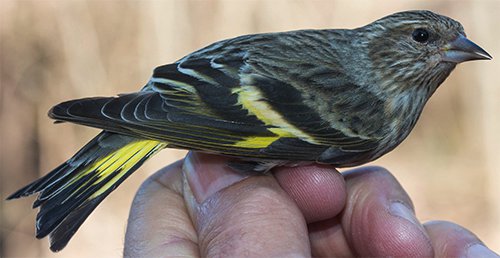
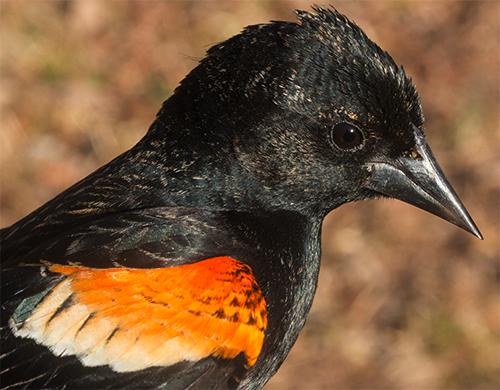
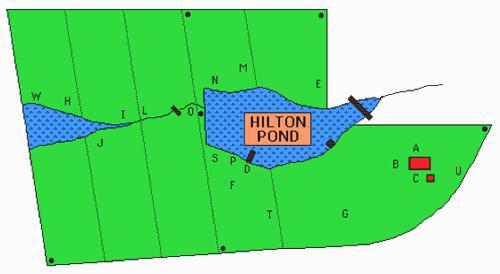
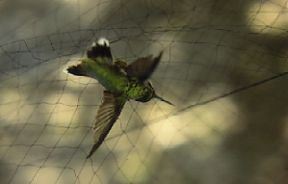
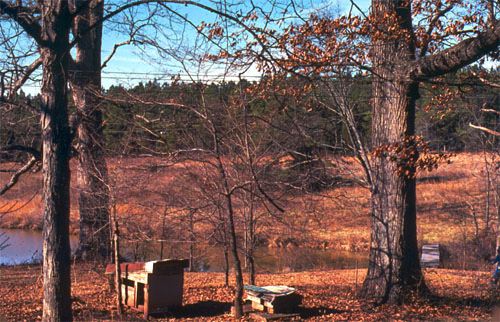
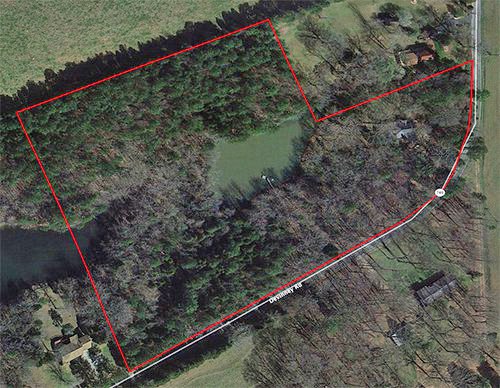
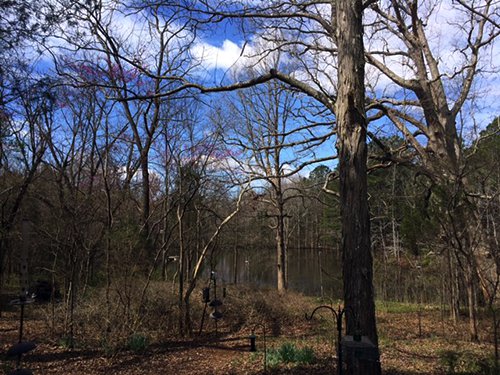
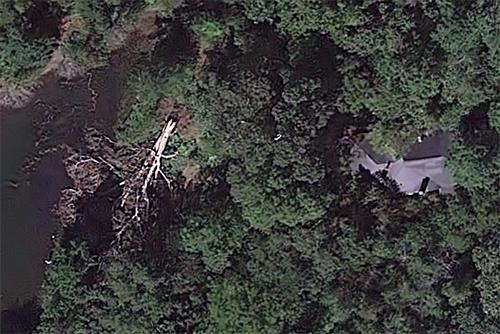
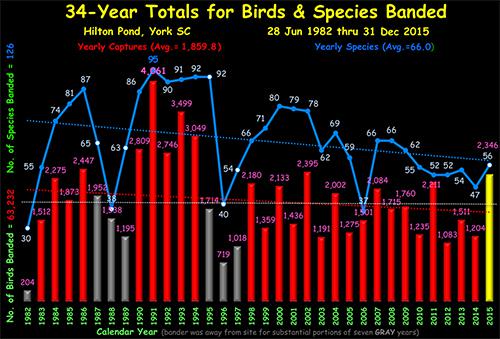
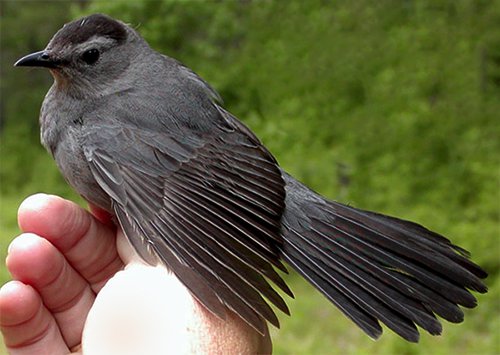
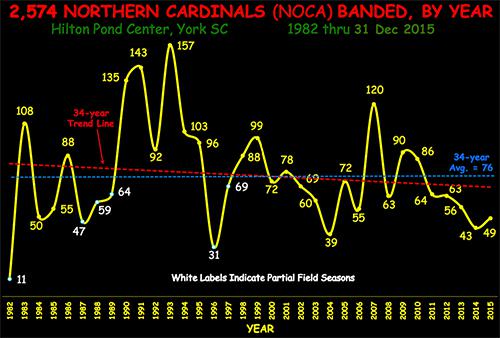
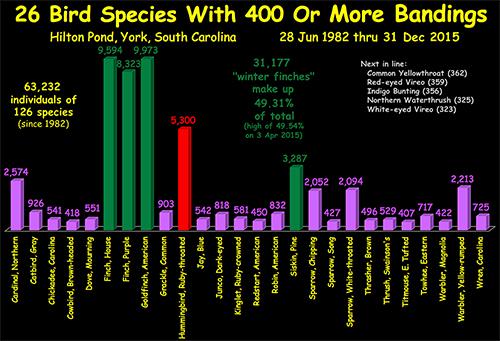
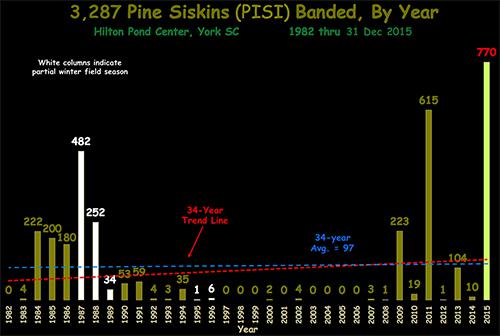
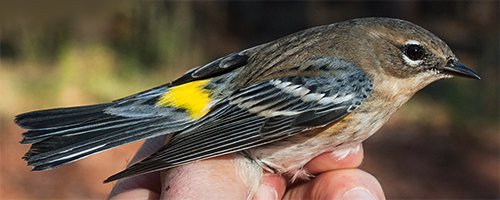
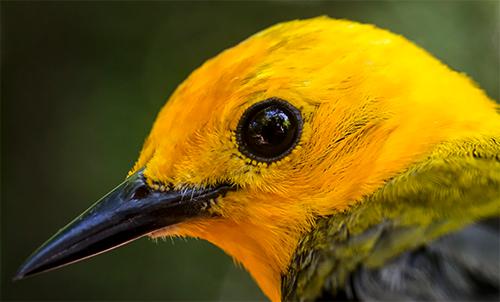
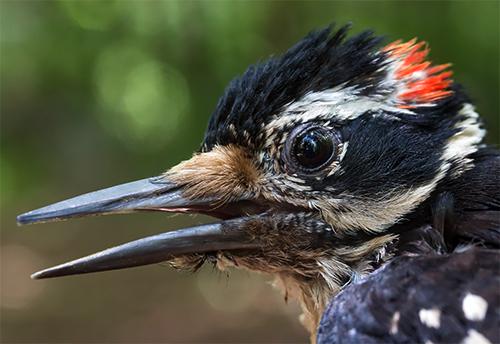
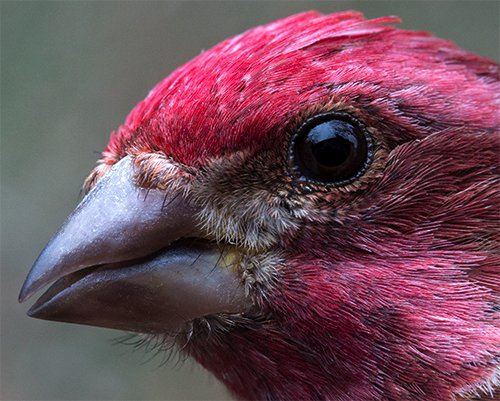
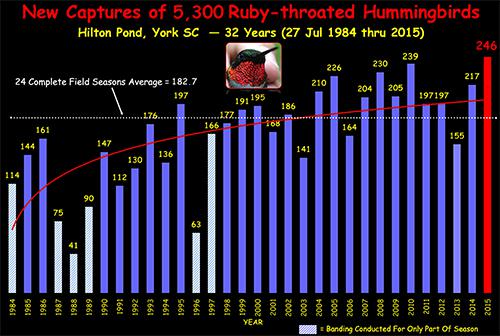
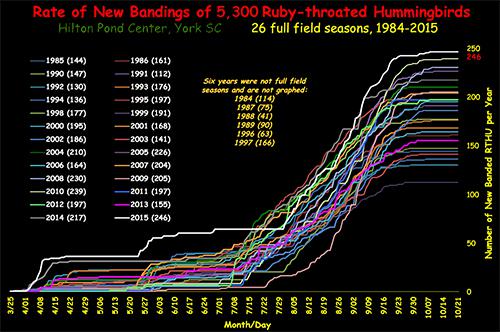
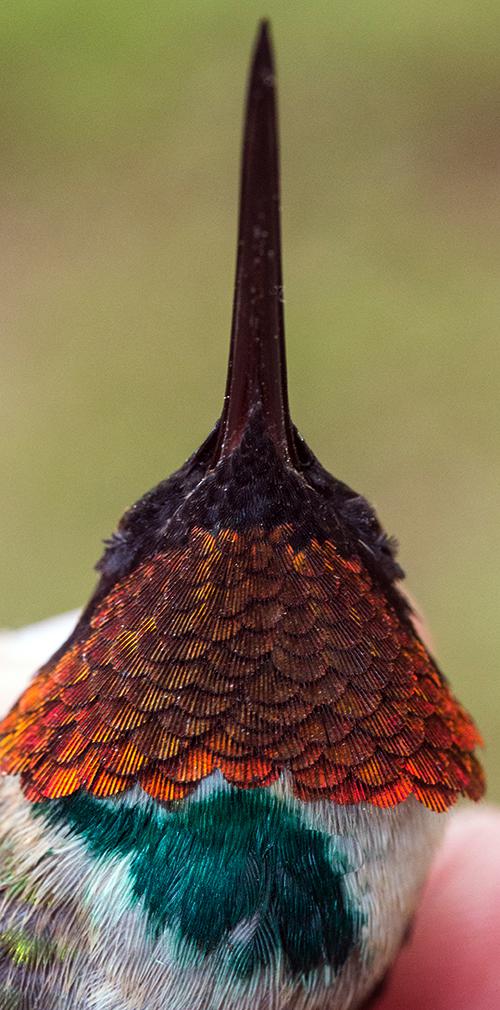
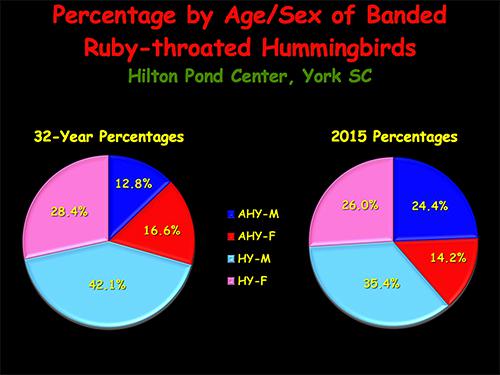
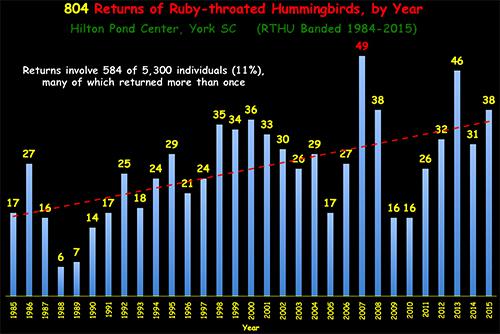
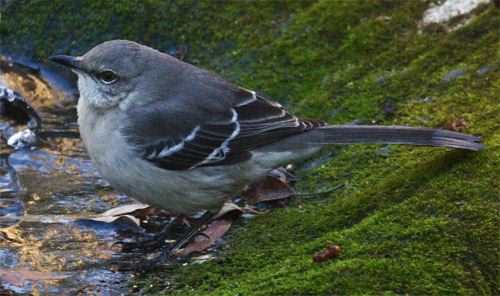
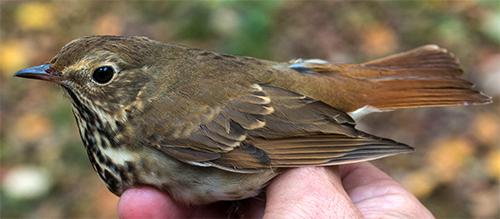








 Oct 15 to Mar 15:
Oct 15 to Mar 15: